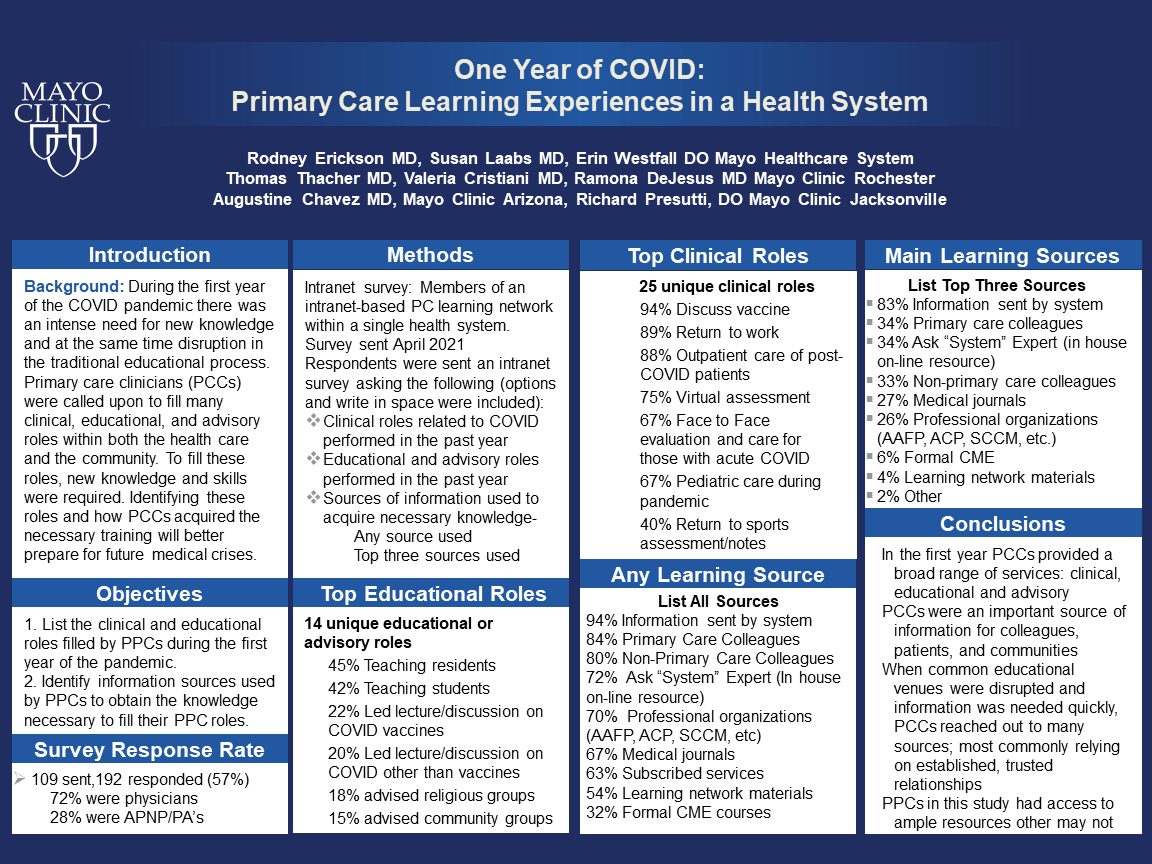PCR040: One Year of COVID: Primary Care Learning Experiences in a Health System
Rodney Erickson, MD; Erin Westfall, DO; Augustine Chavez; Susan Laabs; Thomas Thacher, MD; Ramona DeJesus, MD
Abstract
Context: Patients and communities consider their primary care clinicians (PCC’s) to be their most trusted source of information. During the first 12 months of the COVID pandemic, initially reliable, accurate information was scare, evolving, and at times conflicting. From testing, public health prevention, treatment, and vaccinations clinicians had to learn, apply, and convey this information honestly and openly. Objective: This was a survey of a health system’s PCC’s after the first year of the pandemic. The objective was to determine the clinical, educational, and advisory roles performed by PCC’s and the sources of from which PCC’s obtained the information necessary to fulfill these roles. Study Design: An intranet survey was sent to members of the system’s primary care learning collaborative. Questions were multiple answer with options for open-ended answers. Setting: Large health system. Population: Learning collaborative membership consisting of physicians, nurse practitioners (NP), and physician assistants (PA). Instrument: Brief intranet survey. Outcome measures: Identify clinical and educational roles for PCC. Results: 192 surveys were sent; 109 responses; 72% physicians, 28% NP/PA. 25 unique clinical roles were identified. Most common: discuss vaccine (94%), work excuse/return to work (88%), outpatient care (87%), virtual assessment for COVID (74%). 14 unique educational or advisory roles were identified; the most common being teaching residents (45%) or students (42%), lecture/discussion on COVID (20%) or vaccines (22%) or advising community groups (18%). Sources of information related to COVID were diverse. When asked to identify the three most relied on sources, system (internal COVID website or disseminated by system) (83%), colleagues (34%), and consultants (33%), were the most common source. CME was the least relied upon (7%). Frequently the system utilized information from CDC, state/local health department information along with national organizations. Conclusions: During the pandemic, primary care clinicians provided a broad array of clinical services, and are a source of information for colleagues, patients, and communities. They rely on a broad array of sources for reliable information, mostly relationship-based, not formal CME. The trusted relationships primary care clinicians have with others throughout their communities was essential in promulgating accurate reliable information during the first year of the pandemic.

Dennis Baumgardner, MD
11/19/2021Thank you for your nice work! Dennis